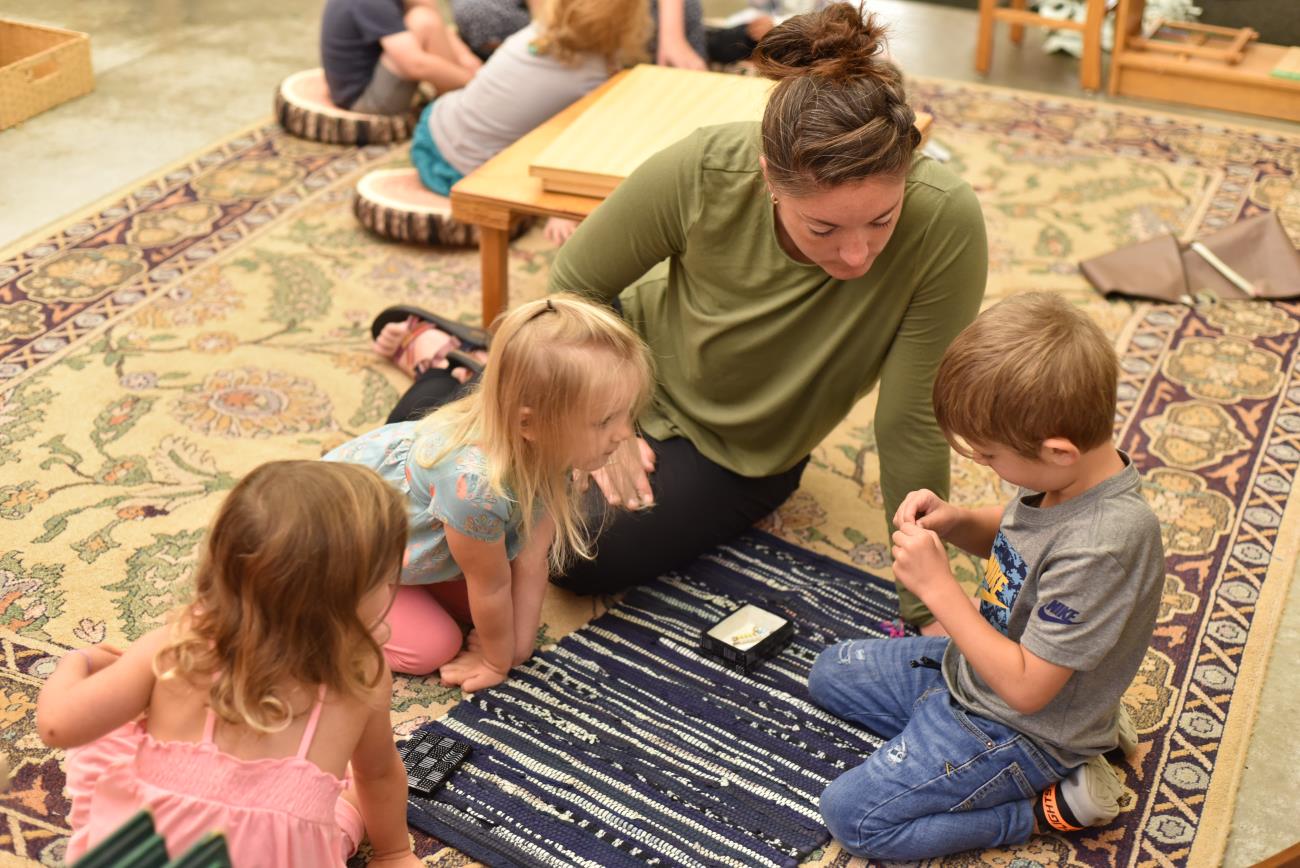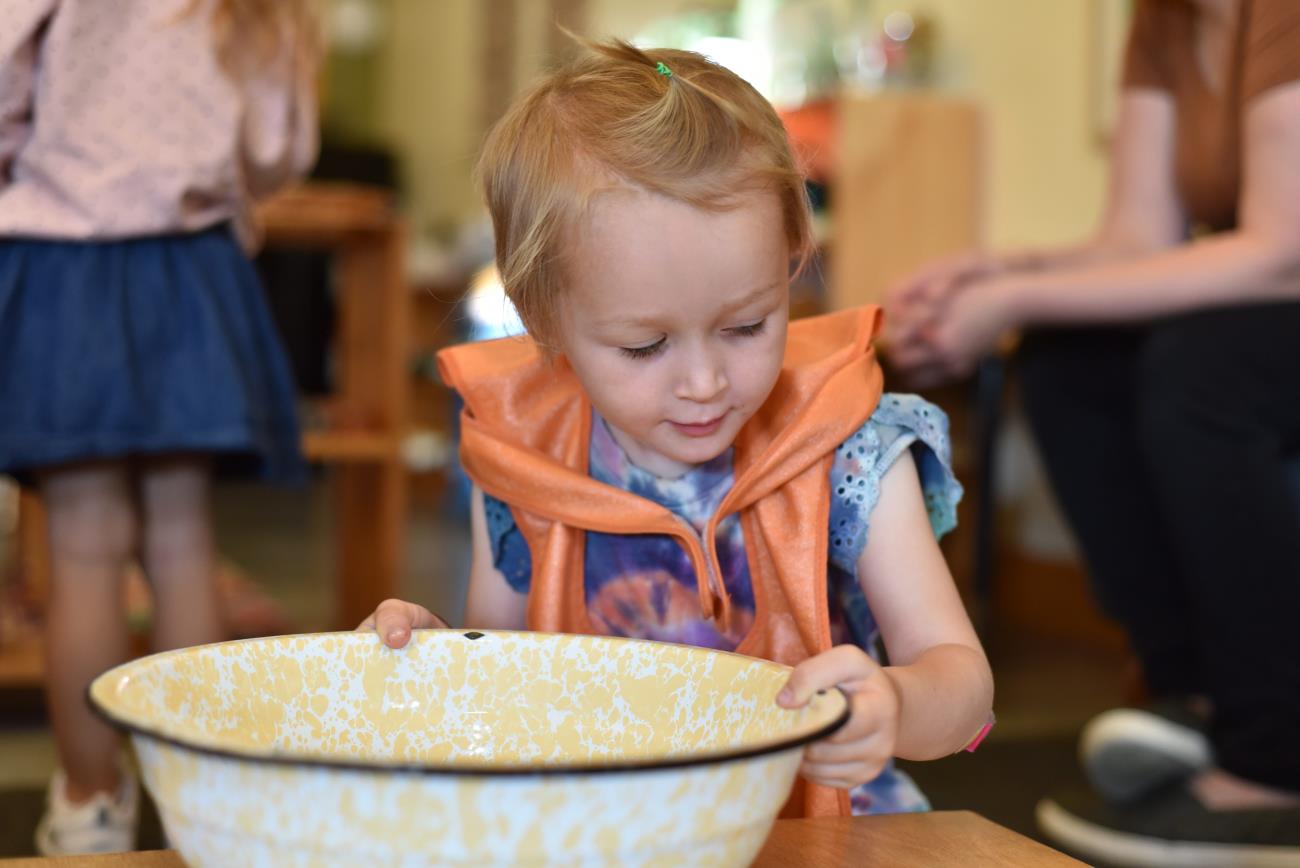Becoming a Montessori Guide at any age-group level is a rather significant undertaking in one’s life. Prior to working at the Children’s House, I was a professional athlete. I was fortunate in that my dedication, work ethic, and accountability as a teammate took me all over the world. I am speaking honestly when I share that training to become a Montessori Guide was the hardest thing I have ever done. It is also my greatest accomplishment.
By the time I graduated from Montessori Training Center Northeast, I had spent two summers writing 1,119 pages to create my own Primary lesson albums. Guides call on these albums frequently as each material has a precise set-up, introduction, carefully analyzed movements, and restoration of materials used. Following a lesson, the guide relies on observations of the child for an opportunity to gain insight into where they might lead the child next.
Some people enter into training with little to no experience in a Montessori classroom. Others, like myself, come with years of experience as an assistant. Regardless of the experience prior to training, there is nothing that prepares a person for the transformation they will undergo. Children are forever seen through a different lens.
Take a moment to imagine the following:
You walk into a room. There are many children. One child is in the middle of the classroom. They are wearing a purple apron. They have a chair next to them holding their tray of similarly colored materials; a basin of water, a sponge, a bar of soap and a brush. Water and soap is on the table, on the child, on the floor and maybe beginning to flood underneath the table of the next child over. Water continues to drip over the side of the table and soap flies as the child feverishly makes a circular motion with their arm. The basin has plenty of water in it, but the child keeps adding to it. You notice the towel hanging on the back of the chair and are itching for the child to use it. Next, the child goes to empty the basin and the puddle under the table is turning into Lake Michigan.
Now as you’re imagining this, your instincts are probably asking you: why didn’t someone stop this child? How on earth would the adults in the room allow a child to make this mess? Who is going to clean that up? What if someone slips on all of the water? Is no one really seeing this? Has this child even had the lesson?
Don’t worry! These are all typical reactions from adults. Especially when we watch children take part in a task that we know exactly how to do. Montessorians often recall their trainer sharing to “sit on their hands,” for that very reason. At times we can be in a rush to step in and help a child. However, sometimes it’s also important to ponder, is the child really asking for or needing my help? We have a few guiding principles in the classroom that assist us in making the decision to step in or not. We intervene when a material is being misused in a way that is not purposeful, and when a material or child is at risk of harm. If misuse or harm is not occurring, then our work is to observe.
As adults, we have gotten to experience water in the way it moves, absorbs, washes, tastes, feels, etc. Children on the other hand are just at the very beginning of exploring all of these qualities in water. More significantly, children are experiencing characteristics and qualities in the entirety of the world around them. To call an alarm to the puddle of water on the floor could have been stripping the child to whatever path of discovery they were on. The puddle being tidied is not more important than the focused child creating themselves through activity.
Becoming a Montessori Guide showed me how to find joy in the messes created. I have gained a much greater appreciation for all the work a child does in creating themselves. After all, children are born dependent on adults to guide the way. I am amazed at how very quickly their dependency begins to shift with each passing day, each skill acquired and the words they are eager to share, “I want to do it!”
“Before such attention and concentration have been attained, the teacher must learn to control herself so that the child’s spirit shall be free to expand and show its powers; the essence of her duty is not to interrupt the child in his efforts. This is a moment in which the delicacy of the teacher’s moral sensitiveness, acquired during her training, comes into play. She must learn that it is not easy to help, nor even, perhaps, to stand still and watch. Even when helping and serving the children, she must not cease to observe them, because the birth of concentration in a child is as delicate a phenomenon as watching with the aim of making her presence felt, or of helping the weaker ones by her own strength. She observes in order to recognize the child who has attained the power to concentrate and to admire the glorious rebirth of his spirit.”
-Dr. Maria Montessori, ‘The Absorbent Mind, Clio Press, Pg. 248

